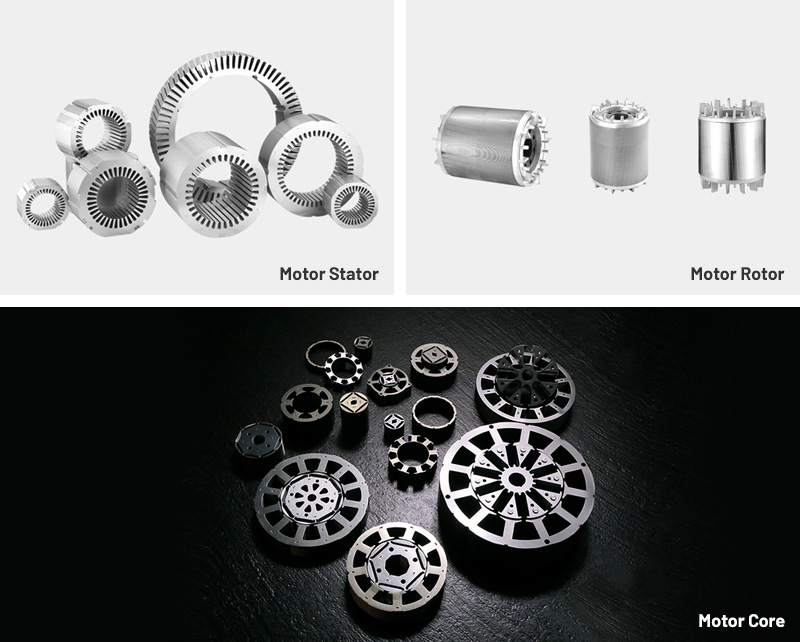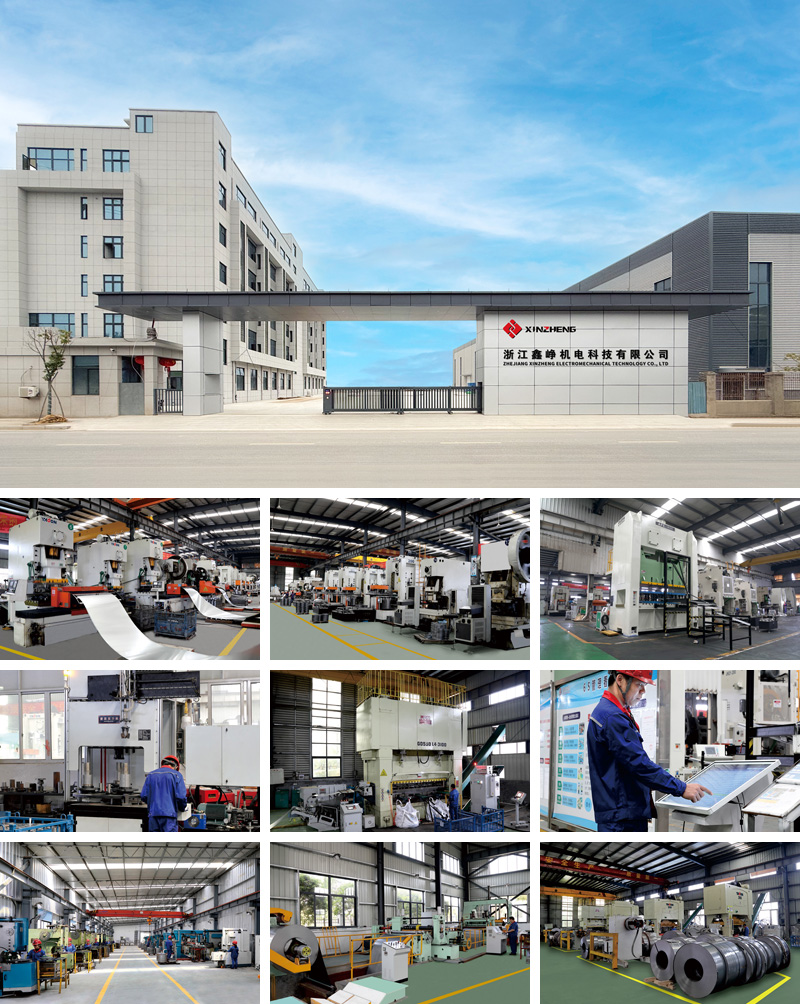Electric motors are essential components in industrial machinery, electric vehicles, HVAC systems, and high-precision equipment. Across these applications, operational reliability, energy efficiency, and thermal stability are critical performance indicators. Motors that operate under fluctuating loads, continuous duty cycles, or extreme environmental conditions require laminations that maintain consistent magnetic and mechanical properties.
Stable performance motor laminations address these challenges by providing uniform electromagnetic behavior, minimizing losses, and supporting long-term reliability. The market demand for such laminations has grown steadily due to increasing industrial automation, expansion in electric vehicle production, and the need for motors that can deliver predictable performance under variable operating conditions. Analysts predict that the global motor lamination market will continue expanding, with a particular emphasis on laminations engineered for high durability and stable performance across diverse motor types.
Motor laminations are thin sheets of electrical steel stacked to form stator and rotor cores. They serve two primary functions:
Reducing Energy Losses: Laminations limit eddy currents and hysteresis losses, which occur during the cyclical magnetization and demagnetization of the core.
Maintaining Mechanical Stability: Laminations reinforce the core structure, allowing it to resist deformation under mechanical stresses and centrifugal forces.
Stable performance laminations focus on consistent electromagnetic and mechanical behavior, even under variable temperatures, voltage fluctuations, and rotational speeds. Critical technical parameters include:
Lamination Thickness: Thinner laminations reduce eddy current losses but require precise control to maintain mechanical integrity.
Material Composition: Electrical steel with controlled silicon content enhances magnetic properties and resistivity.
Insulation Coatings: High-quality coatings prevent interlaminar currents and protect against corrosion, ensuring uniform performance over time.
Optimizing these parameters results in laminations that deliver predictable performance and minimal losses across various operating conditions.
Stable performance motor laminations are typically produced from high-quality cold-rolled electrical steel. Key characteristics include:
Magnetic Permeability: Ensures efficient flux conduction and reduces hysteresis losses.
Electrical Resistivity: High resistivity minimizes eddy current losses.
Mechanical Strength: Laminations must withstand stacking pressure, vibration, and rotational forces without deformation.
Laminations are coated with insulating layers that prevent interlaminar currents, resist thermal degradation, and enhance long-term reliability. Grain-oriented or non-oriented electrical steels are selected depending on whether the application prioritizes directional magnetic flux or uniform flux distribution.
Precision Die Design: Tooling is engineered to produce complex lamination geometries, including slots, holes, and specific outer diameters, while maintaining tight tolerances.
Stamping: Progressive stamping presses shape the laminations from steel strips, ensuring uniform thickness and minimal burr formation.
Annealing and Coating: Post-stamping annealing relieves mechanical stresses and restores optimal magnetic properties. High-quality insulating coatings are applied to prevent electrical losses.
Stacking and Assembly: Laminations are stacked to form rotor or stator cores with precise alignment. Some designs include bonding or welding to reinforce mechanical stability.
The combination of high-quality materials, precise stamping, and careful post-processing ensures that laminations consistently perform across varied operating conditions.
Several variables directly influence the stability and efficiency of motor laminations:
Material Purity and Composition: Impurities or inconsistent silicon levels can reduce magnetic efficiency and compromise mechanical strength.
Dimensional Accuracy: Variations in thickness or slot geometry can cause uneven flux distribution and vibration.
Insulation Integrity: Imperfect coatings lead to increased eddy currents and localized heating.
Stacking Precision: Misalignment introduces vibration, noise, and potential mechanical fatigue.
Manufacturing Consistency: Tool wear, stamping speed, and annealing processes must be tightly controlled to ensure uniform properties across batches.
Attention to these factors ensures reliable motor performance and minimizes the risk of premature failure.
Choosing the right supplier for stable performance motor laminations is critical to ensure quality and consistent supply:
Material Certification: Suppliers should provide documentation specifying steel grade, magnetic properties, resistivity, and mechanical strength.
Production Capability: Experience with precision stamping and high-quality steel is essential.
Quality Control Processes: Suppliers must conduct rigorous inspections, including dimensional checks, coating evaluation, and core-loss testing.
Post-Processing Options: Some suppliers offer annealing, coating, or partial assembly services, simplifying motor manufacturing.
Supply Reliability: Stable lead times and predictable supply chains are vital for continuous production.
Working with reliable, experienced suppliers reduces production risks and ensures laminations meet the required performance standards.
Despite technological advances, producing and using motor laminations for stable performance presents several challenges:
Tooling Costs: High-precision dies and presses are expensive, especially for low-volume production.
Material Waste: Stamping generates scrap, particularly for intricate lamination designs.
Dimensional Consistency: Maintaining uniform thickness and slot geometry across large batches is challenging.
Thermal Management: Motors with high continuous loads require laminations that can handle heat without degrading.
Mechanical Stress: Laminations must resist vibration, centrifugal forces, and mechanical fatigue over long operational periods.
Addressing these challenges requires careful design, advanced manufacturing techniques, and ongoing quality assurance.
Stable performance motor laminations are used in a wide range of industries:
Industrial Drives: High-reliability motors in conveyors, pumps, and compressors benefit from laminations that maintain consistent efficiency under continuous operation.
Electric Vehicles: Traction and auxiliary motors require laminations that support predictable torque output, energy efficiency, and thermal stability.
HVAC and Energy Systems: Motors in fans, blowers, and pumps operate continuously and demand laminations with minimal losses and long service life.
Precision Machinery: Robotics, CNC equipment, and medical devices rely on stable laminations for accurate and smooth motor operation.
Renewable Energy: Generators and inverters in wind and solar systems benefit from laminations that sustain efficiency under varying loads and environmental conditions.
By ensuring consistent performance, these laminations help maintain motor reliability, reduce maintenance costs, and improve overall system efficiency.
The motor lamination industry is evolving to meet increasingly demanding performance requirements:
Advanced Materials: High-strength, low-loss electrical steels with optimized grain structures reduce losses and improve thermal and mechanical stability.
Thinner Laminations: Reduced thickness lowers eddy current losses and allows for compact, high-efficiency motor designs.
Automated Stacking and Assembly: Robotics enhance precision, reduce labor costs, and improve consistency.
Hybrid Manufacturing Techniques: Laser cutting and etching complement stamping for low-volume or complex lamination designs.
Sustainability Focus: Energy-efficient laminations contribute to reduced operational losses, heat generation, and environmental impact.
These trends indicate that laminations designed for stable performance will play an increasingly central role in next-generation electric motors, supporting energy efficiency, reliability, and long-term durability.
Q: What differentiates stable performance motor laminations from standard laminations?
A: They are optimized to maintain consistent magnetic and mechanical properties under variable operating conditions, ensuring reliable motor performance over time.
Q: What materials are typically used?
A: High-quality cold-rolled electrical steel with controlled silicon content, coated with insulating layers for eddy current suppression and thermal management.
Q: What are the main challenges in producing these laminations?
A: Maintaining precise tolerances, ensuring insulation integrity, and managing mechanical stresses during continuous operation.
Q: Are stable performance laminations suitable for electric vehicles?
A: Yes, they support predictable torque, energy efficiency, and thermal stability in traction and auxiliary EV motors.
Stable performance motor laminations are critical for delivering reliable, efficient, and durable electric motors across a wide range of applications. Through precise material selection, advanced manufacturing, and rigorous quality control, these laminations minimize energy losses, maintain structural integrity, and ensure consistent operation under varying loads and environmental conditions.
As industries continue to demand higher performance, efficiency, and longevity from motors, laminations designed for stable performance will remain a fundamental component in achieving these objectives. Manufacturers who prioritize precision engineering, material quality, and dependable supply chains will be able to deliver motors that meet rigorous operational and efficiency standards while minimizing maintenance costs and operational risks.
Product Category

Comprehensive Strength


Copyright © Zhejiang Xinzheng Electromechanical Technology Co., Ltd. All Rights Reserved.
This website uses cookies to ensure you get the best experience on our website.